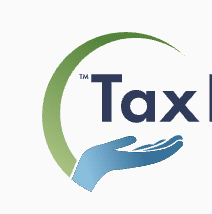
Understanding these rates helps you make informed decisions about when to buy, sell, and hold investments.
This guide covers the essential 2025 capital gains tax rates you need to know. Whether you're researching our best tax relief companies or managing your portfolio, mastering these tax implications will help you optimize your after-tax returns.
Key Insights
- Long-term capital gains tax rates (0%, 15%, 20%) are lower than short-term rates.
- Short-term gains are taxed at your ordinary income tax rate.
- High earners may face an additional 3.8% Net Investment Income Tax.
- Holding investments longer than one year significantly reduces the tax burden.
Understanding Capital Gains Taxes
Capital gains taxes apply when you sell an investment for more than you paid. When you buy a stock for $100 and sell it for $150, that $50 profit represents a capital gain subject to taxation.
Realized vs. Unrealized Gains
When discussing investments, it’s important to distinguish between realized and unrealized gains, since each carries different financial and tax implications.
- Realized gains: They occur when you sell an asset for cash. You owe taxes on these gains in the year you sell, regardless of whether you reinvest the proceeds.
- Unrealized gains: These happen when an asset increases in value but you haven't sold it yet. These "paper gains" aren't taxable until you sell the investment.
Assets Subject to Capital Gains Tax
Capital gains taxes apply to various investment types:
- Stocks and bonds: Individual securities and mutual fund shares.
- Real estate: Investment properties and rental homes.
- Business equipment: Assets used in business operations.
- Collectibles: Art, coins, antiques, and precious metals.
- Cryptocurrency: Bitcoin, Ethereum, and other digital assets.
Your primary residence may qualify for special exclusions, allowing you to exclude up to $250,000 ($500,000 for married couples) of gains from taxation.
Short-Term vs. Long-Term Capital Gains Tax Rates
The length of time you hold an investment dramatically affects your tax rate. This holding period determines whether your gains qualify for preferential long-term rates.
How the Holding Period Works
- Short-term capital gains: This applies to assets held for one year or less. These gains are taxed at your ordinary income tax rate, which can be as high as 37% for high earners.
- Long-term capital gains: This applies to assets held for more than one year. These gains qualify for special preferential tax rates that are significantly lower than ordinary income rates.
2025 Long-Term Capital Gains Tax Rates
Long-term capital gains tax rates for 2025 are based on your income level:
0% Long-Term Rate:
- Single filers: Up to $48,350
- Married filing jointly: Up to $96,700
- Head of household: Up to $64,750
15% Long-Term Rate:
- Single filers: $48,351 to $533,400
- Married filing jointly: $96,701 to $600,050
- Head of household: $64,751 to $566,700
20% Long-Term Rate:
- Single filers: Over $533,400
- Married filing jointly: Over $600,050
- Head of household: Over $566,700
Why Holding Period Matters
The difference between short-term and long-term rates can be substantial. If you're in the 32% ordinary income tax bracket, selling after 11 months means paying 32% on gains, while waiting just two more months could reduce your rate to 15% or 20%.
Understanding the Net Investment Income Tax (NIIT)
The Net Investment Income Tax adds a 3.8% tax on investment income for high-income taxpayers. This tax applies in addition to regular capital gains rates.
Who Pays the NIIT in 2025
You're subject to the NIIT if your modified adjusted gross income exceeds these thresholds:
- Married filing jointly: $250,000
- Married filing separately: $125,000
- Single or head of household: $200,000
- Qualifying widow(er) with child: $250,000
How NIIT Interacts with Capital Gains
The NIIT applies to the lesser of your net investment income or the amount your income exceeds the threshold. For example, if you're single with $220,000 income and $15,000 in capital gains, you'd pay 3.8% NIIT on $15,000 (since your excess income is $20,000).
Common NIIT Misconceptions
Many investors mistakenly believe that all capital gains above the income thresholds are subject to the NIIT. However, certain exclusions apply, including:
- Gains from selling your primary residence (within exclusion limits)
- Certain inherited assets
- Some qualified small business stock
- Qualified opportunity fund investments
Special Cases and Considerations for Capital Gains
Certain types of investments face different capital gains tax treatment that can significantly impact your tax liability.
Collectibles Tax Rates
Capital gains on collectibles are taxed at a maximum rate of 28%, higher than the standard long-term capital gains rates. This applies to:
- Art and antiques
- Coins and precious metals
- Stamps and other collectibles
- Wine and other investment-grade items
Even if your income qualifies for the 0% or 15% long-term rate, collectible gains face the higher 28% maximum rate.
State Capital Gains Taxes
State capital gains tax treatment varies significantly across the country:
No state capital gains tax:
- Alaska, Florida, Nevada, New Hampshire
- South Dakota, Tennessee, Texas, Wyoming
Highest state rates:
- California: 13.3%
- New York: 10.9%
- New Jersey: 10.75%
When combined with federal rates and NIIT, total capital gains taxes can exceed 40% in high-tax states.
Cryptocurrency Tax Implications
Cryptocurrency gains follow the same rules as other capital assets:
- Short-term gains (held ≤ 1 year): They are taxed at ordinary income rates.
- Long-term gains (held > 1 year): They qualify for preferential capital gains rates.
Each transaction may be a taxable event, including crypto-to-crypto trades.
Pro tip: You must report all cryptocurrency gains on your tax return, but you can offset gains with losses from other crypto transactions.
Strategies to Minimize Capital Gains Tax Liability
Several strategies can help reduce your capital gains tax burden and pay less tax while maintaining your investment objectives.
Hold Investments Long-Term
The most straightforward strategy is holding investments for more than one year to qualify for lower long-term rates. This single change can reduce your tax rate from as high as 37% to as low as 0%.
Tax-Loss Harvesting
Tax-loss harvesting involves selling investments at a loss to offset capital gains. Key rules include:
- Offset gains with losses: Use investment losses to reduce or eliminate capital gains taxes.
- $3,000 annual limit: You can deduct up to $3,000 of excess losses against ordinary income.
- Carry forward losses: Unused losses beyond $3,000 carry forward to future tax years.
- Wash sale rule: You can't repurchase the same or substantially identical security within 30 days.
Strategic Timing of Sales
Time your investment sales strategically to manage your tax liability:
- Spread gains across years: Avoid selling multiple appreciated assets in the same tax year.
- Coordinate with income: Time sales during lower-income years to benefit from lower rates.
- Year-end planning: Review your portfolio in December to optimize gains and losses.
Utilize Tax-Advantaged Accounts
Tax-advantaged accounts offer significant benefits for reducing capital gains taxes:
Traditional 401(k)/IRA Benefits
- Contributions reduce current taxable income.
- Investments grow tax-deferred.
- Capital gains within accounts aren't taxed annually.
Roth 401(k)/IRA Benefits
- Contributions made with after-tax dollars.
- Qualified withdrawals are completely tax-free.
- No required minimum distributions during your lifetime.
Health Savings Account (HSA) Benefits
- Triple tax advantage: deductible contributions, tax-free growth, tax-free withdrawals for medical expenses.
- Can be used as a retirement account after age 65.
Common Tax Minimization Mistakes
Avoid these frequent errors when managing capital gains taxes:
- Poor record-keeping: Failing to track purchase dates, prices, and transaction costs.
- Ignoring exclusions: Not understanding available deductions and special situations.
- DIY complex situations: Attempting to handle complicated tax scenarios without professional help.
- Emotional selling: Making investment decisions based on tax implications rather than investment merit.
Reporting Capital Gains on Your Taxes
Proper reporting ensures compliance and helps you avoid costly mistakes during tax season.
Required Tax Forms
- Schedule D (Form 1040): This is the primary form for reporting capital gains and losses. This form calculates your net capital gain or loss and determines your tax liability.
- Form 1099-B: This is for reporting proceeds from broker transactions. Your broker sends this form showing sales proceeds, but you're responsible for calculating your actual gain or loss.
Essential Documentation to Maintain
Keep detailed records throughout the year to simplify tax reporting:
Purchase Information
- Purchase date and price
- Transaction fees and commissions
- Any dividend reinvestments
Sale Information
- Sale date and price
- Brokerage fees and commissions
- Adjusted cost basis calculations
Common Reporting Errors to Avoid
Prevent these frequent mistakes when filing your tax return:
- Using incorrect tax rates: Applying short-term rates to long-term gains or vice versa.
- Forgetting the $3,000 limit: Not properly applying the annual capital loss deduction limit.
- Missing carryover losses: Failing to carry forward unused losses from previous years.
- Incorrect cost basis: Not properly adjusting basis for splits, dividends, or other corporate actions.
- Missing forms: Failing to report all 1099-B forms received from brokers.
Conclusion
Understanding capital gains tax rates helps you make smarter investment decisions and keep more of your profits. The difference between short-term and long-term rates can significantly impact your wealth-building strategy.
Focus on long-term investing and utilize tax-advantaged accounts effectively. When you learn how to pay your taxes strategically and work with qualified professionals, you can improve your investment returns without taking additional market risk.
Frequently Asked Questions
1. What are capital gains taxes?
Capital gains taxes are the taxes you pay on the profit from selling an asset, such as stocks, bonds, real estate, or other investments, for more than you paid for it.
2. What’s the difference between short-term and long-term capital gains?
Short-term gains: Profits from assets held for one year or less. Taxed as ordinary income, which means they fall under your regular income tax bracket.
- Long-term gains: Profits from assets held for more than one year. Taxed at preferential (usually lower) rates.
3. How do I know if I qualify for the 0% long-term capital gains rate?
If your taxable income falls below certain thresholds, you may not owe any federal tax on long-term capital gains. The exact thresholds depend on whether you file as single, married filing jointly, or head of household.


